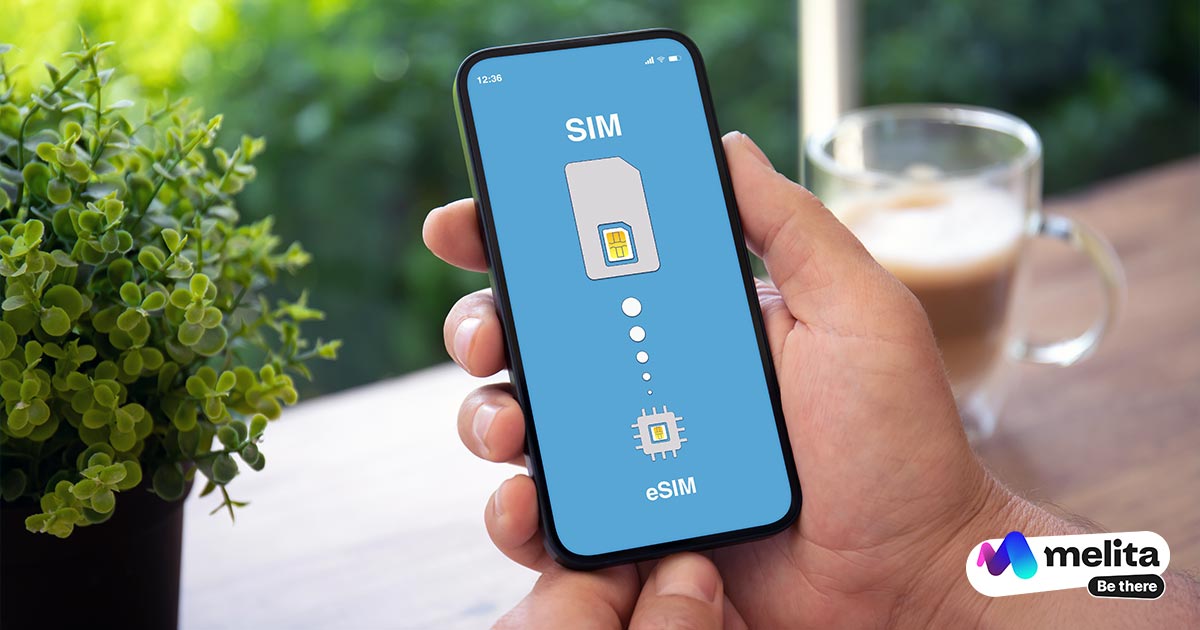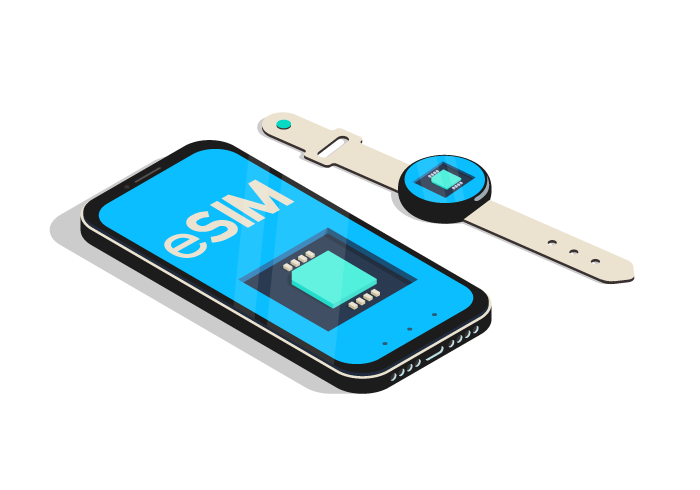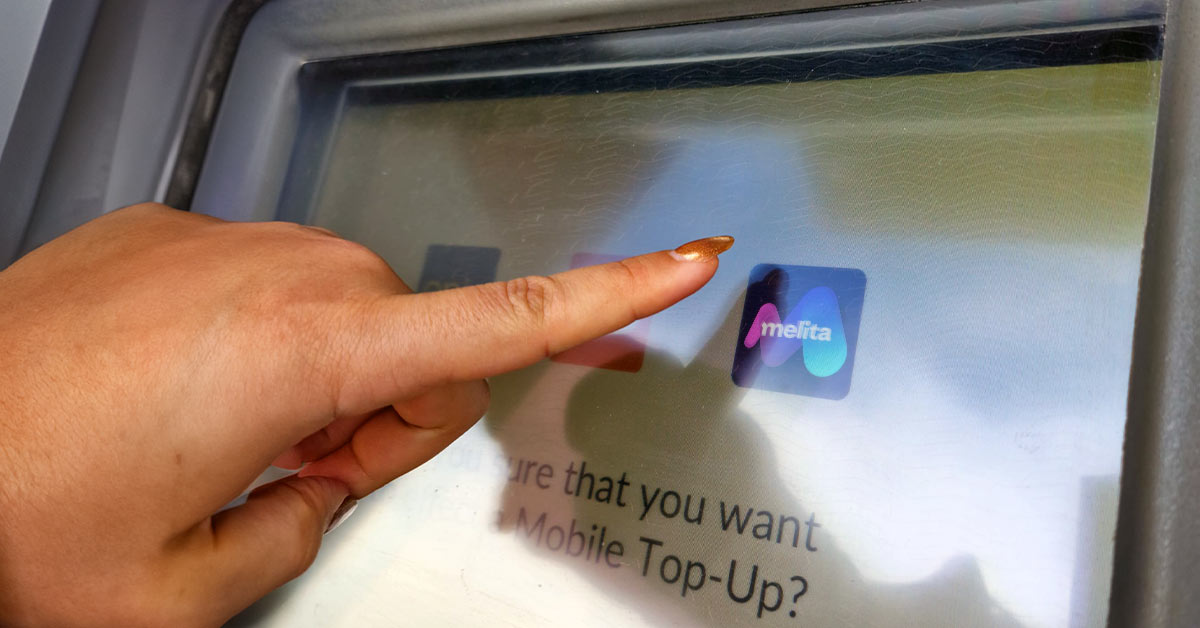
As mobile phone users, we are quite familiar with the physical SIM card installed in our devices. It’s a chip about the size of a thumbnail, and it tells the phone which network we are using and what our phone number is. With advances in technology, the SIM has transformed from a static yet removable chip you place in the phone to a digital eSIM, whose information is re-programmable and stored on an embedded chip.
The move from physical SIMs to eSIMs came about in part from the growing “Internet of Things” industry. Embedded eSIMs are smaller than SIMs, and do not require extra space for a slot. Since they can be remotely programmed, they are also perfect for industrial equipment that might be inaccessible and installed throughout the world. eSIMs are having a major impact on the telecom sector, as they enable new companies to provide the seamless activation of mobile services that do not require physical SIM cards at all. Customers can easily activate mobile coverage anytime, from anywhere.
Understanding eSIM Technology
The eSIM is embedded directly into a mobile phone or device. An eSIM that is eUICC-compatible can be reprogrammed with new information. With physical SIMs you would typically have to change the SIM card when you switched networks. With eSIMs, the carrier can simply update your eSIM so you can connect to their network.
A unique ICCID, or Integrated Circuit Card Identifier, is assigned to each specific eSIM profile. The ICCID allows you to connect to your mobile network and send messages, make calls and access mobile data.
Advantages of eSIM Technology
There are several key advantages associated with eSIM technology. Because eSIMs can be updated remotely, it is easy for users to switch service providers or plans without needing to physically swap out SIM cards. This helps facilitate easier international travel with access to local data plans.
In addition to streamlined activation, eSIMs also offer enhanced security features and greater control over your mobile connections. The smaller form factor of the embedded SIM card also allows phone manufacturers to add more features to mobile phones or devices. The typical physical SIM card is 8.8 mm in size and requires a slot, while the eSIM is only 4mm with no slot required.
eSIM Technology in Practice
The introduction of eSIM technology has helped revolutionise industries and open up new market opportunities for companies. In the telecommunications sector, eSIMs allow mobile network operators to address the growing demand for easy accessibility and more bandwidth, and allow them to create new business models that provide flexible services at a lower cost.
Wearable technology has become an important part of our lives, and eSIMs have boosted the ability of these smaller devices to offer instant connectivity and communication. They are especially valuable when utilised for real-time monitoring and tracking related to customer health issues. Our driving experience has also been majorly affected by eSIM technology that fully enables the connected car. In addition to providing data from sensors inside and outside of the vehicle, customers with dual-eSIM technology have one eSIM for their car and one for their mobile connectivity while on the road.
eSIM Security and Data Protection
When compared to a physical SIM card, an eSIM can offer significant benefits with regard to security. Removable SIM cards can be stolen and then used for port out scams where thieves swap the stolen SIM cards into new phones to gain access to a customer’s texts and call data, or try to access financial information by resetting their credentials.
To help assure data privacy with eSIMs, it’s important for customers to use strong passwords and set up two-factor authentication when possible. Both eSIM providers and device manufacturers can also implement encryption protocols to help ensure data is secure. The eSIM’s sophisticated encryption provides enhanced data protection when compared to traditional SIMs, helping safeguard personal data and user credentials. eSIMs also offer remote provisioning capability, eliminating the need to have a SIM card physically handled and exposed to tampering or theft when an update is needed.
How eSIM Is Shaping the Future of Telecommunications
One key benefit when using eSIM technology for 5G networks relates to remote provisioning. With this feature, eSIMs can be programmed with the credentials they need to connect to a specified network without having to physically access the device. eSIMs also allow devices to easily switch between 5G and 4G networks as needed, and can also provide enhanced security and an improved user experience.
eSIMs have also had a ground-breaking impact on rural connectivity and emerging markets. A key part of the telecom revolution has been how the universal access to Internet service has improved global access to finance. eSIMs allow users to easily sign up for the Internet and conduct financial transactions. We have also seen a surge in eSIM use and adoption in fitness trackers and smartwatches. In the future, we can also expect to see eSIMs used in a wide range of new IoT devices, and in applications such as asset tracking, smart meters and supply chain management.

Challenges and Considerations in eSIM Adoption
eSIMs are a relatively new technology, and it initially took some time to agree upon applicable standards. Once consumer awareness and education on eSIMs expanded, eSIM success in the marketplace greatly increased. The primary challenge to rapid eSIM adoption at the present time relates to the customer journey and the life cycle of devices.
For customers, there is a learning curve with eSIMs. They are not something tangible like the physical SIMs that we’ve removed, swapped and replaced since smartphones became mainstream. Technically the changes to an eSIM happen fully online and on a customer’s device screen, which is new from a customer experience perspective. The market rollout of eSIMs has also required a longer time since customers may use their existing phones longer, only replacing them in some cases when they really need to.
Future Technological Developments Influenced by eSIM
The role of eSIMs go far beyond phones. The small size and remote provisioning capabilities of eSIMs allow manufacturers of non-traditional devices to utilise these chips to enable seamless communications across vast networks. Wearable medical devices can integrate with electronic health record (EHR) systems, allowing medical professionals to monitor patients in real-time and prescribe timely and appropriate treatment. eSIMs enable new cars to be equipped with eCall technology, which can automatically call emergency services and communicate the vehicle’s location if there is a serious accident.
There are numerous applications of eSIMs for industrial use in machinery and automation, ranging from streamlined logistics and shipping to enhanced monitoring of the factory floor and deployment of cutting-edge smart energy and agricultural solutions. eSIMs are also the best choice for wearable devices like smartwatches where there is no space for a physical SIM. The eSIM chips allow a smartwatch to connect to the Internet even without a smartphone nearby. Customers can easily make or answer calls, stay connected and get messages and even stream music without a phone or Bluetooth connection nearby.






